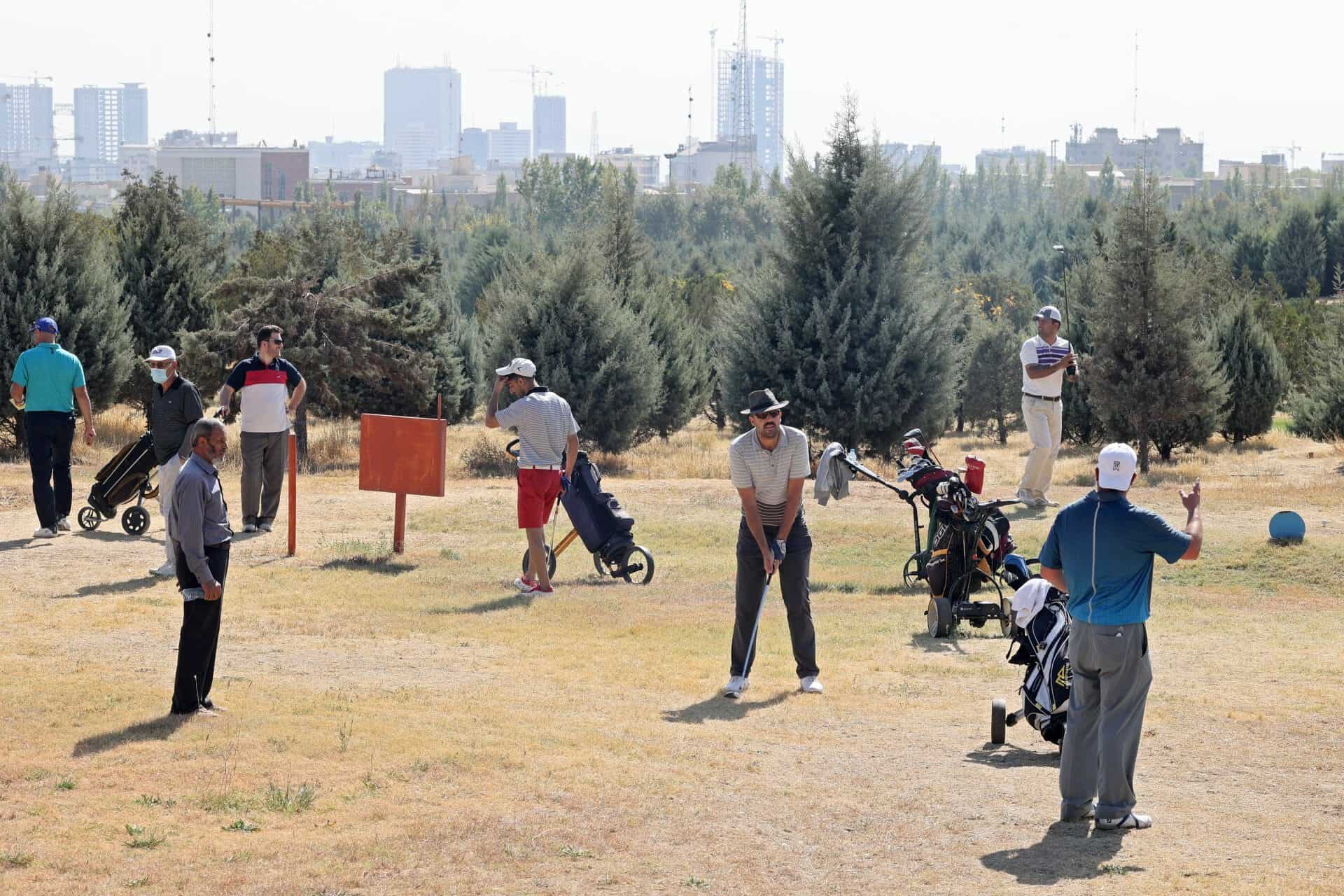With his polo shirt, white cap and sunglasses, Khashayar Tamadon is dressed for a sport which Iran is not known for: golf. Even more unusual is the Tehran course that he plays on.
Currently hosting Iran’s national championship, the Enghelab golf course has only 13 holes, not 18 like at major country clubs elsewhere.
When the course was built decades ago it had five more holes but over the years the fairways have been eaten away by development. Tehran’s tiny contingent of players feels lucky that they still have 13, but are fearful even more of the course may disappear.
“Although golf is one of the 10 most popular sports in the world and has 100 years of history in Iran, it remains one of the least known here,” Saeed Barati, 39, third-placed in the current tournament, told AFP.
“I hope we won’t completely lose this course which already only has 13 holes,” he said against a backdrop of skyscrapers and mountains, beyond the tree-fringed course.
Barati, who works at the ministry of petroleum in the southwestern province of Khuzestan, is worried because the “sport officials in the country do not have a favorable view” of the game.
Football and wrestling get most of the nation’s attention.
For a few like Tamadon, 44, golf is a passion. Playing in the national championship, he explains how the course ended up with only 13 holes.
Nibbling away
The anomaly has nothing to do with superstition or an error by those who conceived the fairways in 1964.
Rather, after the 1979 Islamic revolution toppled Iran’s monarchy, the country’s new leadership nibbled away at the course, declaring it too large for the game’s small number of players.
Buildings from the sports ministry and Olympic committee were constructed on the fairways.
“Initially it was 18 holes, but as obviously golf was not very popular”, other sports, buildings or departments started taking some of the land, said Tamadon, an industrialist.
“So now we have 13 holes.”
Tehran’s club has about 300 members, half of whom are women, but that’s a minuscule number in a metropolis of more than eight million residents.
Built in an upscale neighborhood of the capital, the course is located at the Enghelab (Revolution) Sports Complex and was known as the Imperial Club before the revolution overthrew Shah Mohammad Reza Pahlavi.
For this year’s championship all 90 participants, who come from across the country, first play the 13 existing holes.
Then they repeat five of them to make 18.
Prime real estate
With a blue leather golf glove on his left hand, film producer Amir Zoveini recalled the historical baggage attached to the sport locally.
“The word ‘golf’ has a bad reputation” in Iran because it is associated with elites and the former ruling class under the shah, who were often shown playing golf or billiards in films, he said.
But Zoveini rejects the elite association and contends that the true history of the sport is more complex. It began in the south with British oil companies, he said.
Iranians started as caddies but “they ended up learning the game and playing it themselves,” after the nationalization of the petroleum sector in 1951 and the departure of the British, Zoveini said.
Other than Tehran’s lone club, most of Iran’s golf courses are in the oil-producing south.
Like Barati, Zoveini fears his playground might entirely disappear because “this is a huge land, this is prime real estate and just a few people play”.
He suspects the Islamic Republic of Iran Golf Federation wants to construct a building on the last green of the course — known as “the 18th” — instead of investing in a new generation of players.
“False,” countered federation president Hamid Azizi.
His organization intends to train 3,000 players, both men and women, across the country, and will build a “national academy” outside of the Tehran course itself, he said.
The “18th” green will be used as a venue during competitions and as a training ground at other times, Azizi said, countering doubts about the game’s future.
“Golf in Iran has the potential to become one of the most popular sports,” he said.








